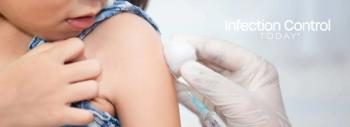
Do Eco-Conscious Cleaning Products Clean as Well as Their Traditional Counterparts?
Explore eco-friendly cleaning with a focus on EPA certifications and eco-friendly cleaners' efficacy. Uncover real-world research insights and a review of an ISSA thought leader session.
In the pursuit of sustainable living, consumers increasingly seek eco-friendly cleaning products. In a conversation with a cleaning industry expert, Infection Control Today® (ICT®) seeks answers about key features and certifications to ensure alignment with sustainability goals.
ICT speaks with Kirsten Hochberg, PhD, senior clinical and scientific affairs specialist for CloroxPro. Kirsten hosted
ICT asked, “When consumers are looking to purchase eco-friendly cleaning products, which I know that you know so much about, what are the features or certifications that they should consider to ensure that the products align with their sustainability goals?”
“One of the best things to look for and one of the easiest to identify is the EPA Safer Choice certification for cleaning products and the EPA Designed for the Environment certification for disinfectants,” Hochberg told ICT. “The requirements for both of [these certifications] are almost entirely overlapping; you have to show parity performance to traditional products, which is the big thing that most cleaners are looking for, is that their eco-friendly product will work just as well as their traditional one. And that's built into the certification."
Hochberg continues, "In addition to that, there are only certain ingredients that are approved by the Safer Choice standard. And they've been, you know, extensively researched for qualification. And you have to also show sustainability benefits to your product. So, you have to have at least 25% post-consumer recycled plastic and the packaging. And to keep your certification, you have to show improvement in that metric over time. So just by finding the certification, which you can have on the product label, so it's easy to see it's right on the bottle, you know you're getting all those features. There are 7 active ingredients that are approved, including lactic acid, which is the basis for [Clorox's] Eco-clean disinfecting cleaner, which is a disinfectant that disinfects in two minutes or less and kills viruses in 30 seconds.”
Hochberg also provides a glimpse into an upcoming thought leader session at ISSA. Beyond the efficacy of eco-friendly products, the session delved into the intersection of sustainability and the cleaning industry. Topics included the impact of eco-conscious choices on LEED (Leadership in Energy and Environmental Design) certification for buildings, a deeper understanding of how disinfectants work, and an exploration of the science behind green alternatives.
Newsletter
Stay prepared and protected with Infection Control Today's newsletter, delivering essential updates, best practices, and expert insights for infection preventionists.






